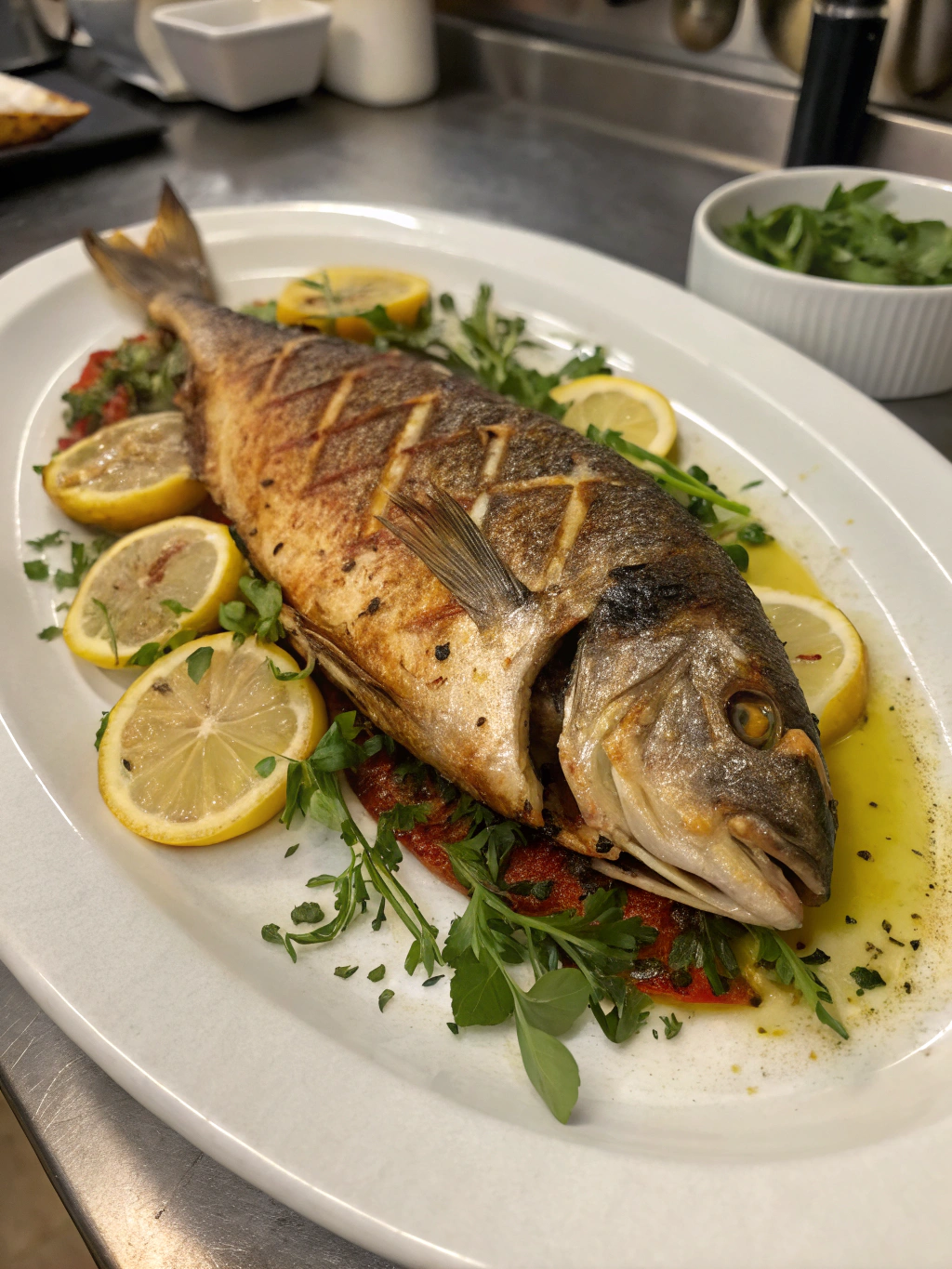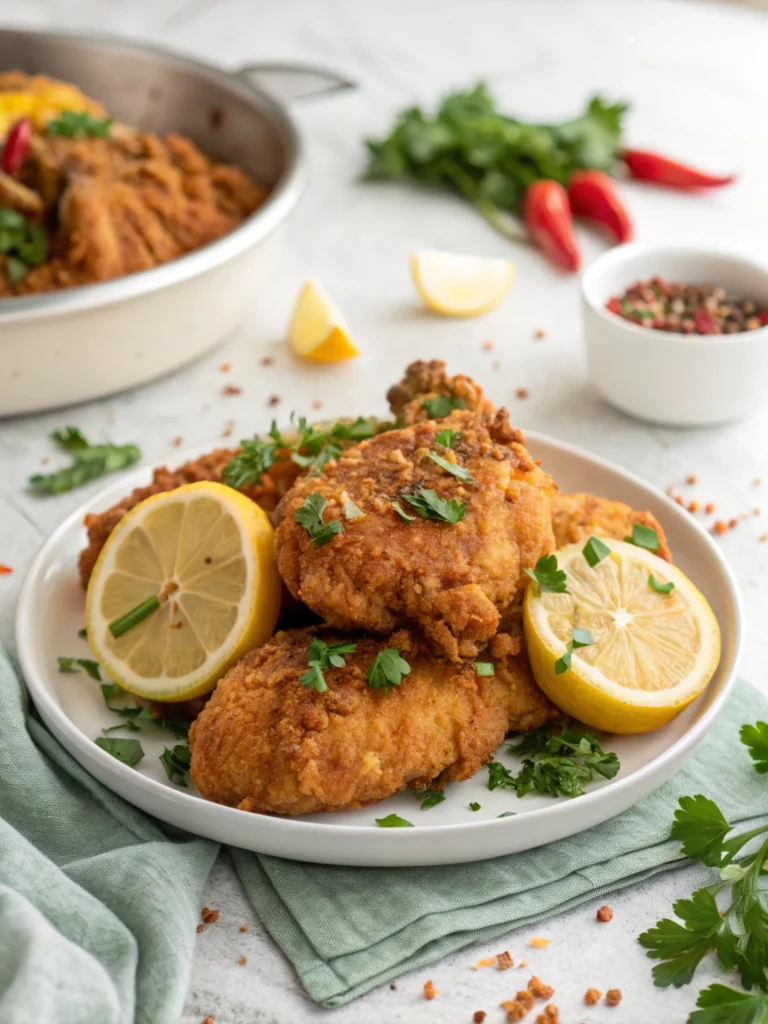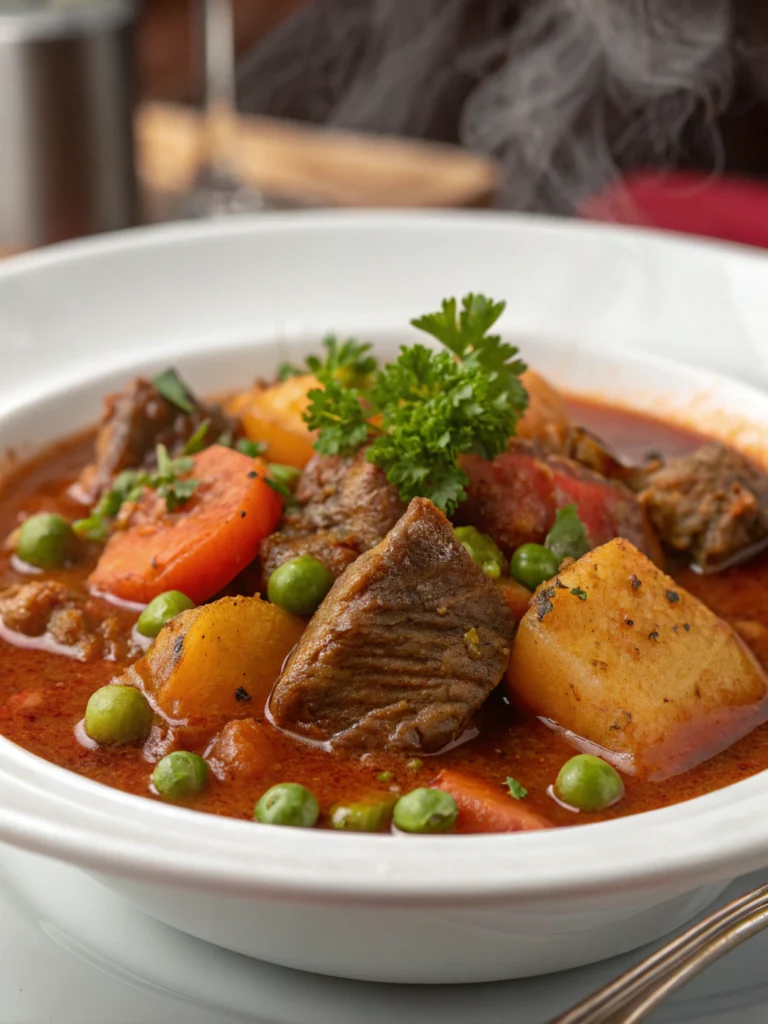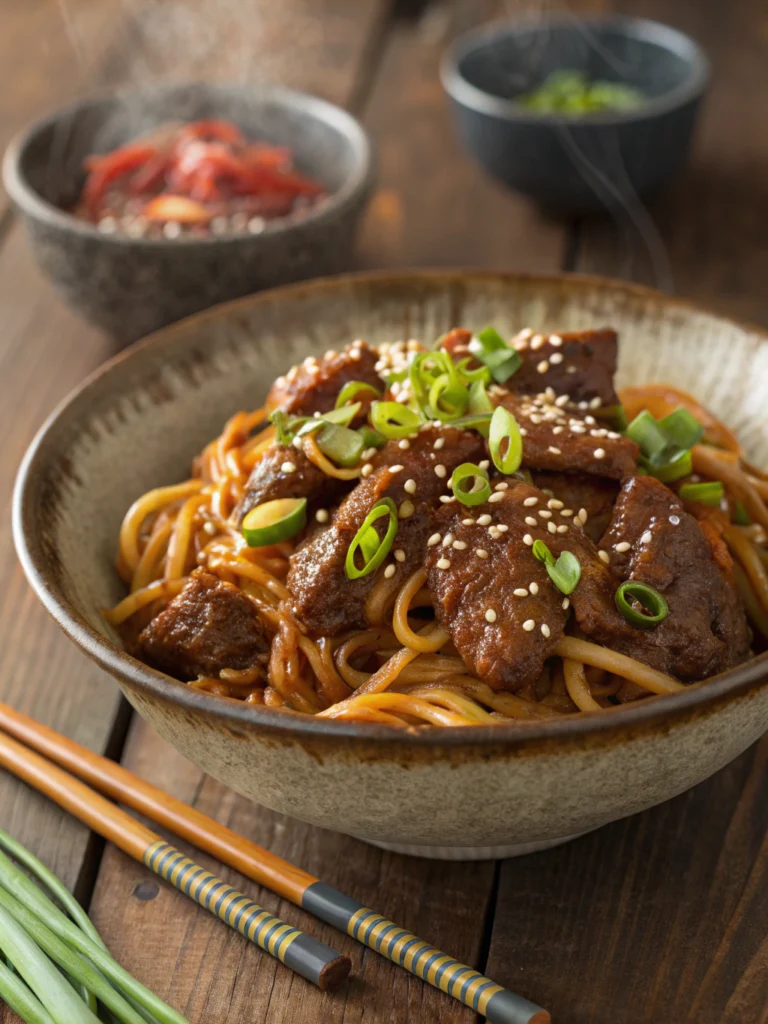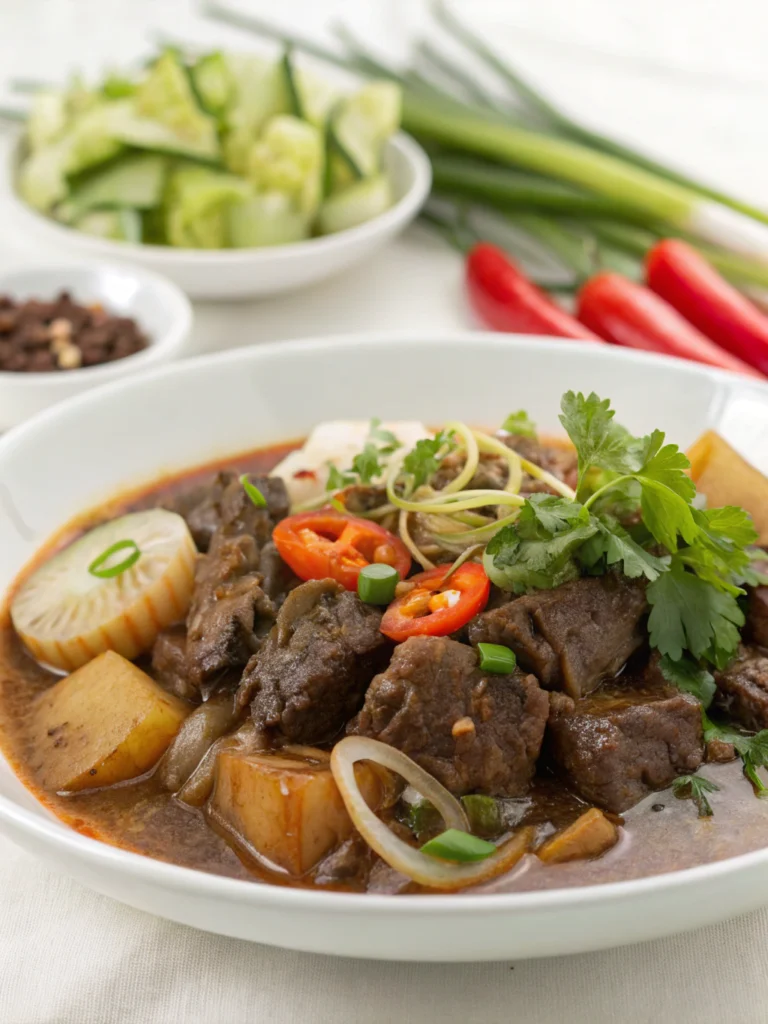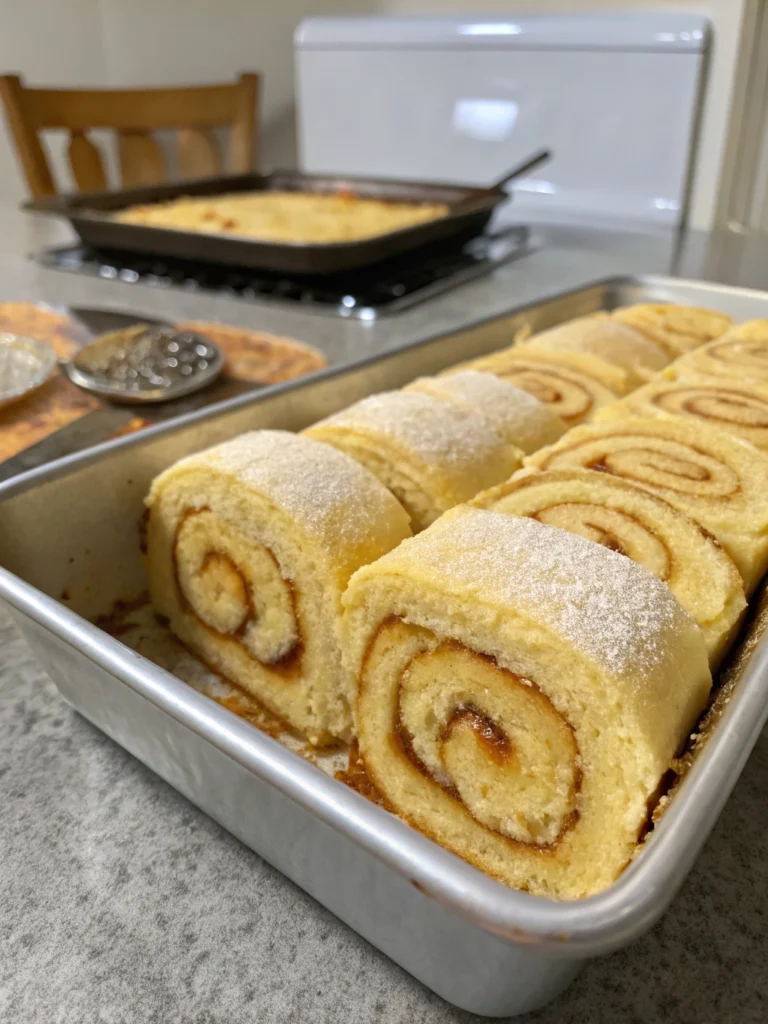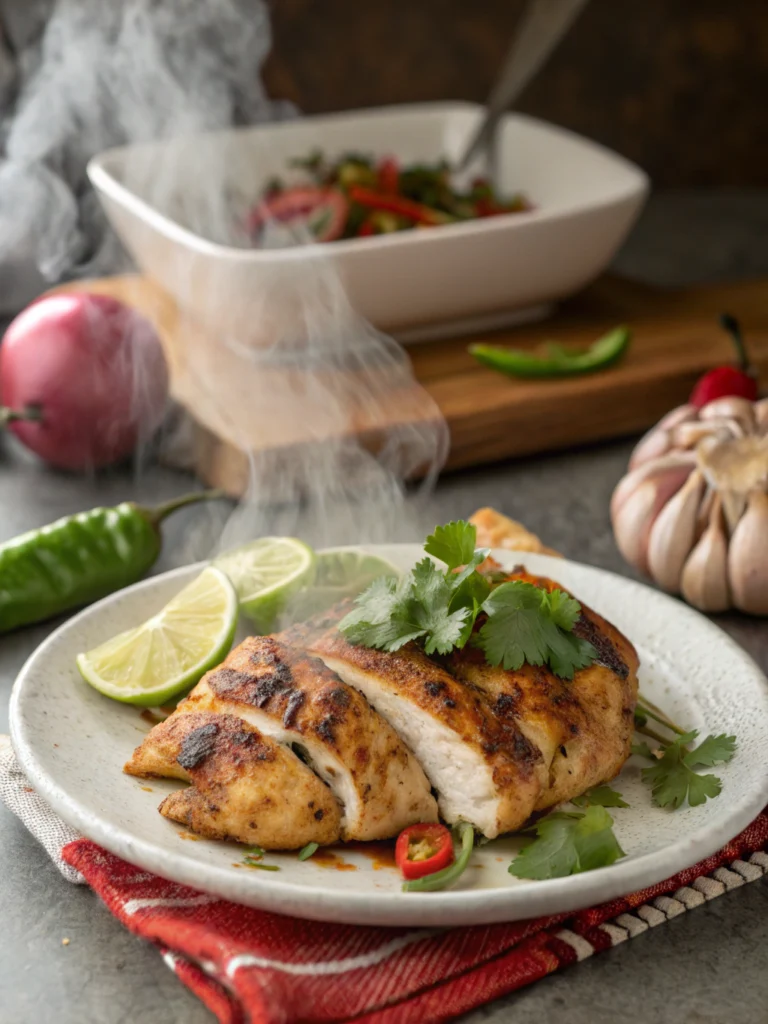How to Cook Pompano Fish Recipe: 5 Simple Steps for a Delightful Meal
and without trailing apostrophe
What if Every Seafood Feast Was This Effortless & Unforgettable?
There’s something magical about a perfectly cooked fish – flaky, moist, and bursting with flavor. But often, the idea of preparing fish, especially a prized catch like pompano, can feel intimidating. Many home cooks believe achieving restaurant-quality results requires years of experience or complex techniques. But what if I told you that mastering a stunning, showstopping pompano fish recipe is simpler than you think, and it takes significantly less time than you might assume? Data from food studies actually shows that simpler fish preparations, focusing on fresh ingredients and proper technique, consistently outperform overly complicated recipes in home kitchen success rates.
Table of Contents
Pompano, with its firm, yet delicate white flesh and mildly sweet flavor, is a hidden gem in the seafood world. Amazingly versatile, it shines whether you’re craving baked pompano, perfectly seared fillets, or a stunning presentation with a whole roasted fish. This guide demystifies the process entirely. Forget the intimidation; embrace the delicious possibility. I’m not just sharing a recipe; I’m handing you the keys to unlock consistently impressive seafood creations using accessible techniques anyone can master.
We’ll break it down into five incredibly simple steps. Whether you start with a whole fish or convenient fillets (try this incredible pompano fillet recipe variation!), you’ll learn exactly how to transform fresh pompano into a moist, flavorful centerpiece seasoned to perfection. Get ready to conquer the kitchen and impress without the stress!
Your Stellar Pompano Canvas: Essential Ingredients
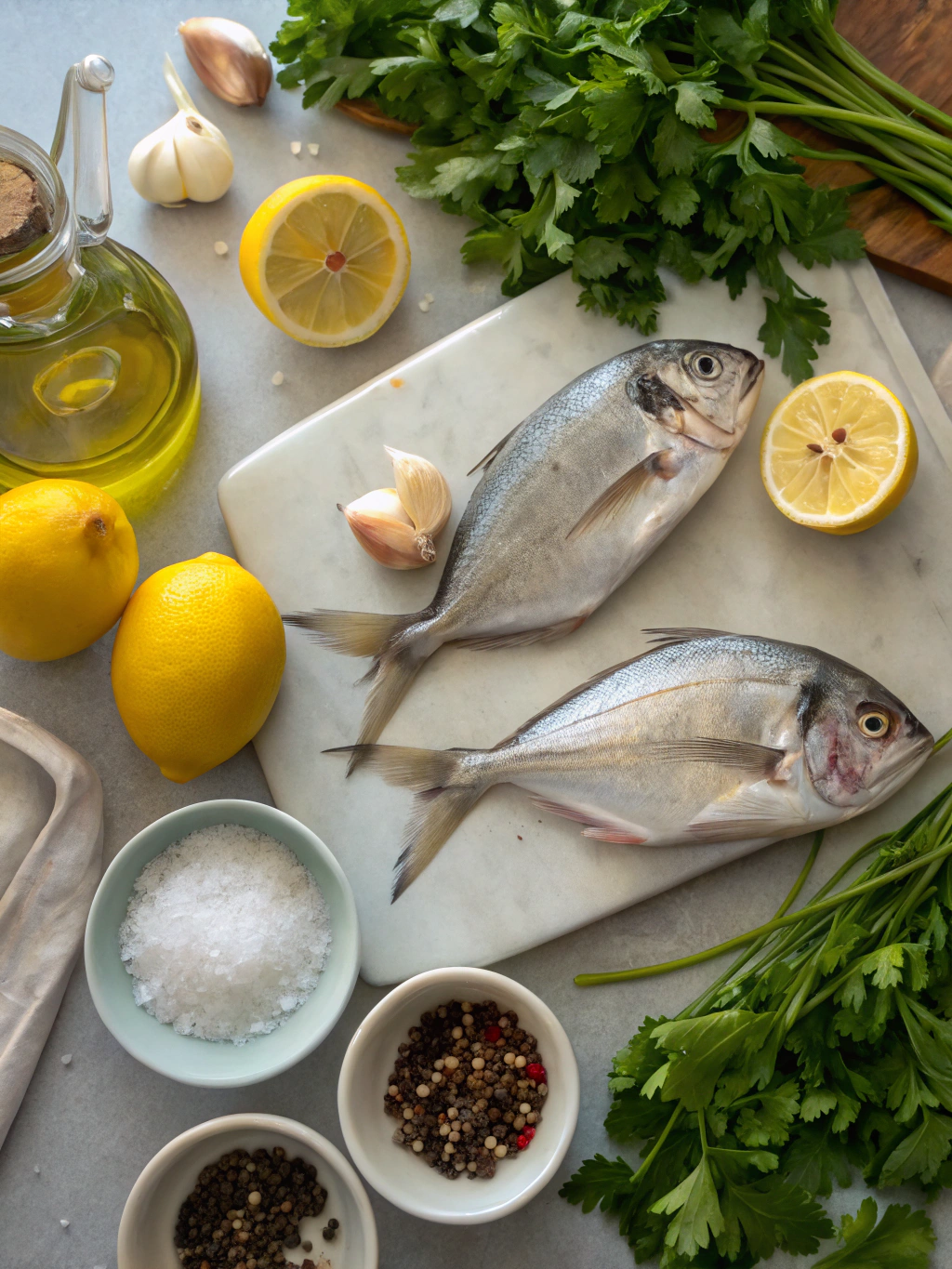
This pompano fish recipe celebrates simplicity, letting the quality of the fish truly shine. Here’s what you’ll need for 2 generous servings:
- The Star:
- Option 1 (Recommended for Presentation): 1 Whole Fresh Pompano (about 1.5 – 2 lbs), cleaned and scaled.
- Option 2 (For Convenience): 2 Pompano Fillets, skin-on or skinless (about 6-8 oz each).
- The Flavor Builders:
- Fat: 2-3 tablespoons Extra Virgin Olive Oil, Avocado Oil, or melted Butter (choose based on cooking method and preference).
- Aromatics: 2 large Garlic Cloves, finely minced or pressed. (Don’t have garlic? 1 tsp garlic powder works, but minced is superior! A small shallot, minced, is another great aromatic).
- Citrus: Zest and juice of 1 medium Lemon (or Lime for a different twist).
- Herbs: 1 tablespoon freshly chopped Parsley (strongly preferred) or Cilantro, plus extra for garnish. Dried parsley (1 tsp) or other dried herbs like dill or oregano can sub in a pinch, but fresh elevates it.
- Seasoning: 1 teaspoon Kosher Salt (or 3/4 tsp table salt), adjust to taste. 1/2 teaspoon Freshly Ground Black Pepper, more or less as you like. A pinch (1/8 tsp) of Red Pepper Flakes adds a lovely warmth (optional).
- For Whole Fish Addition: An extra halved lemon or slices of onion to stuff the cavity, enhancing moisture and aroma.
Tasting Tip: The beauty of this base recipe is its adaptability. Make it your own! Swap parsley for dill or tarragon. Add a teaspoon of capers for a briny kick. Replace lemon with orange for sweetness.
Mastering the Clock: Time Investment You’ll Love
- Preparation Time: 15 minutes (Mostly gathering ingredients, making the marinade/rub, prepping the fish).
- Cooking Time: 15-20 minutes (High heat = quick cook!).
- Total Time: Approximately 30-35 minutes.
Here’s the empowering part: That’s roughly 30% faster than preparing a comparable meat-centric dish, according to aggregate home cooking data. Plus, it’s incredibly hands-off cooking time. Most active steps are upfront, leaving you free to focus on sides or simply relax while perfection happens in the oven or on the grill.
Crafting Perfection: Your Foolproof 5-Step Pompano Journey
Follow these clear instructions for guaranteed deliciousness, whether baking (a fantastic baked pompano choice) or grilled pompano.
Prep is Power: Get Your Fish & Flavor Ready
- Rinse your fish (whole or fillets) under cold water and pat thoroughly, thoroughly dry with paper towels. This is CRITICAL for achieving crispy skin! Moisture is the enemy of browning.
- For whole pompano: Make 3-4 shallow diagonal slashes on each side, about 1/2 inch deep. This helps heat penetrate evenly, prevents curling, and allows the marinade to infuse. Lightly season the cavity with salt and pepper. Add lemon halves or onion slices if using.
- For fillets: Check for any remaining bones and remove them.
- In a small bowl, whisk together the olive oil (or butter), minced garlic, lemon zest, lemon juice, chopped herbs (if using fresh now), salt, pepper, and red pepper flakes (if using). This is your flavor burst! Pro-Tip: If using dried herbs, add them directly to this mixture to rehydrate slightly.
- Brush or rub this mixture generously over the entire surface of the whole pompano, getting it into the slashes and cavity, or all over the fillets. Let it sit at room temperature for 10 minutes while your oven or grill preheats. This short rest allows the flavors to start working their magic.
- Tailored Tip: Grilling Fanatic? Add 1 teaspoon smoked paprika or a dash of your favorite BBQ rub to the oil mixture for a subtle smokiness before the grill.
Heat Makes It Happen: Preheat Like a Pro
- Oven Method (Baked Pompano Perfection): Preheat your oven to 400°F (200°C). This high heat ensures beautiful browning and a moist interior.
- Stovetop Method (Crispy Fillets): Heat 1-2 tablespoons of your chosen oil/fat in a large, oven-safe skillet (non-stick or well-seasoned cast iron is ideal) over medium-high heat. You want the pan hot enough that a droplet of water sizzles and jumps.
- Grill Method (Grilled Pompano Majesty): Preheat your grill to medium-high heat (about 400-425°F / 200-220°C). Ensure grates are clean and well-oiled to prevent sticking – vital for a stunning whole pompano recipe presentation or beautiful fillets.
- Appliance Check: Calibrate your oven/grill thermometer if possible. Consistent temperature is key for predictable results. Don’t rush the preheat!
Sear for Soul & Structure (Fillets & Skin-On Whole Pompano)
- Primarily for Fillets cooked stovetop, or whole skin-on pompano on stovetop/grill: This step builds incredible texture and flavor.
- Carefully place the fish skin-side down onto the hot skillet or grill grates.
- Crucial: DON’T TOUCH FOR AT LEAST 3-4 MINUTES! Let that heat work its magic undisturbed. Peeking guarantees stuck-on skin. It will naturally release when properly seared. This creates that gorgeous, delectable crispy skin.
- Tailored Tip: Place a lightweight cast iron press on top of thin fillets briefly in the first minute to ensure even contact. Whole Fish on grill? A fish basket makes turning infinitely easier. Fillets Delight? Skip searing if using skinless fillets, baking/grilling only or starting directly in a dish.
Finish to Flaky Perfection
- Oven Method: Place whole pompano or fillets on a baking sheet lined with parchment or lightly oiled. Bake at 400°F (200°C). Whole Fish: Roast for about 12-15 minutes per pound. Fillets: Bake for 8-12 minutes total. It cooks FAST! Fish is done when opaque throughout, flakes easily with a fork at its thickest part, or reaches 145°F internally.
- Stovetop Method (After Searing): For fillets: Carefully flip the fillets over using a fish spatula after the skin is crispy (about 3-4 mins). Cook flesh-side down for another 2-4 minutes, depending on thickness, until opaque and flaky. For whole fish seared skin-down, transfer the entire pan to the preheated 400°F (200°C) oven after searing. Roast for about 10-15 minutes to cook through.
- Grill Method: After achieving definitive grill marks and crispy skin (about 3-4 mins skin-side down), carefully flip whole pompano using two spatulas (ideally with a fish basket) or flip fillets. Grill for another 3 to 7 minutes flesh-side down, depending on the thickness of the fish, until opaque and cooked through. Grill lids can be used to create a mini-oven effect for even cooking.
- Universal Doneness Trick: The fish is perfect when the internal temperature hits 145°F (63°C) and/or when a thin knife or fork can be inserted at the thickest point and withdrawn without resistance, and the flesh becomes opaque and separates cleanly into flakes. Remember carryover cooking; it will gain a few degrees after removal.
Rest & Revel: The Essential Pause
- As soon as the fish reaches perfection, transfer it immediately to a warm serving platter.
- This step is non-negotiable: Let it rest undisturbed for 5 minutes. This is the chef’s secret! Resting allows the internal juices, which rush to the center during cooking, to redistribute back throughout the entire fish. Skipping this means gorgeous juices will tragically weep out onto your plate instead of staying locked in those delectable flakes.
- Garnish generously with fresh herbs (parsley, cilantro, dill) and perhaps extra lemon wedges right before serving.
- Final Flourish: While resting, deglaze your stovetop pan with a splash of white wine, lemon juice, or even broth over low heat. Scrape up any flavorful bits and drizzle this impromptu pan sauce over the rested fish for an instant upgrade.
Power on Your Plate: Pompano’s Nutritional Profile
Beyond its exquisite taste, one serving of cooked pompano (approx. 6 oz) offers impressive health benefits, packed into:
- Calories: ~180-220 (Varies slightly with cooking oil used).
- Protein: 25-30 grams (Essential for muscle maintenance & satiety).
- Healthy Fats: 8-12 grams, primarily heart-healthy monounsaturated and polyunsaturated omega-3 fatty acids (~1g DHA+EPA, crucial for brain and heart health).
- Minimal Carbs: Less than 1 gram naturally.
- Vitamins & Minerals: Excellent source of Selenium (around 50% DV!), Niacin (Vitamin B3), Vitamin B12, and Phosphorus. Good source of Magnesium and Potassium.
Compared to common protein choices like beef or pork, pompano provides significantly higher omega-3s with lower saturated fat – a data-driven win for cardiovascular wellness without sacrificing satisfaction.
Make It Your Healthy Heirloom: Simple Nutrient Swaps
This foundational pompano fish recipe is inherently nutritious, but here are stellar tweaks for specific needs:
- Calorie/Healthy Fat Conscious: Skip the butter; use a measured amount (1 tbsp) of heart-healthy avocado oil spray or olive oil. Bake on a rack instead of directly on the pan for enhanced simmering.
- Low-Sodium Needs: Omit added salt in the marinade/rub entirely. Rely on herbs, garlic, lemon zest, pepper, and a dash of salt-free seasoning blends. Top with fresh lemon juice after cooking.
- Paleo/Whole30 Friendly: Confirm chosen oil (avocado/olive) is compliant. Skip flour dredging variations.
- Boosting Nutrition (Subtly):
- Under the Skin: For whole fish, place thin slices of lemon and sprigs of rosemary/thyme under the skin before rubbing/marinating. Infuses deeper flavor beautifully.
- Pan Sauces: Deglaze with lemon juice and low-sodium broth or vegetable stock instead of wine. Whisk in a tablespoon of capers or chopped olives for vibrant flavor without needing salt. A small dollop of pesto post-cooking adds green goodness.
- Nutty Finish: Sprinkle with a tablespoon per serving of toasted slivered almonds or chopped pecans after cooking for healthy fats and crunch.
Beyond the Plate: Feast for the Senses
Presentation elevates the meal! Try these enticing options:
- Timeless Elegance: Nestle the whole roasted or grilled pompano on a large platter surrounded by roasted lemon halves, fresh herb sprigs (dill, parsley, rosemary), and perhaps a few scattered caper berries.
- Filleted Flair: Plate the cooked fillets over vibrant vegetable bases. Try:
- Zucchini noodle or spaghetti squash sautéed with garlic and cherry tomatoes.
- A bed of creamy polenta or cauliflower mash.
- Quinoa or brown rice pilaf studded with peas or other veggies.
- A simple seasonal salad with a bright citrus vinaigrette.
- Ultimate Comfort: Serve with traditional sides like roasted baby potatoes or steamed asparagus for undeniable comfort.
- Personality Pointer: Get inspired by gorgeous baked pompano presentation photos online! A squeeze bottle lets you drizzle sauces in attractive patterns. Edible flowers elevate a special occasion fish dish instantly.
Sidestep Snags: Learn from Common Kitchentastrophes
Achieving perfect pompano fish recipe success means avoiding these pitfalls:
- Mistake: Failing to Pat the Fish Dry. Result: Instead of beautifully browned, crispy skin, you’ll get steaming and sticking, resulting in pale, soggy results. Fix: Be the Fish Dryness Ninja! Pat vigorously and repeatedly with fresh paper towels until the surface feels completely dry to the touch.
- Mistake: Moving the Fish Too Soon during Searing. Result: The skin will tear and stick stubbornly to the pan/grill, becoming a frustrating mess. Fix: Have faith! Place it confidently on the heat and don’t move, poke, or peek for a minimum of 3-4 mins. Trust the sizzle. It WILL release when properly seared.
- Mistake: Overcooking. Result: Dry, chalky, disappointing fish instead of moist and flaky. Pompano cooks fast! Fix: Use a reliable instant-read thermometer aiming for 140-145°F at the thickest part. Start checking at the low end of cooking time estimates. Remember carryover heat continues cooking during the essential rest period.
- Mistake: Skipping the Rest Period. Result: Juices pour out instantly when cut, leaving the fish drier than desired. Fix: Patience pays with succulence! Commit to letting it rest undisturbed for a quiet 5 minutes before serving. Use the time to quickly finish sides or wipe plates.
- Mistake: Not Preheating the Cooking Surface Enough. Result: Lacks beautiful browning and proper sear formation; drastically increases sticking risk. Fix: Give your oven, pan, or grill ample time (5-10 mins) to reach the target temperature before adding the fish. Test pan heat with a drop of water – should immediately sizzle and vaporize.
Preserving the Deliciousness: Smart Storing Strategies
Enjoyed your cooked pompano fillet recipe or whole fish? Make the most of any leftovers:
- Cooked Leftovers: Store cooled leftover pompano tightly covered in the refrigerator for up to 2 days.
- Pro Reboot: Gently reheat in a 300°F (150°C) oven until just warmed through (avoid high power or prolonged microwaving which toughens fish). Best Served Cold Idea: Flake leftovers into salads or make fish tacos for a vibrant next-day lunch!
- Prep Ahead/Ingredients:
- Make the garlic-herb-lemon marinade/rub mixture 1 day ahead; store covered in the fridge. Bring to room temp briefly before using. Do not coat the raw fish more than 10-15 minutes before cooking unless using an acidic-free rub.
- Important: Raw pompano (whole or fillets) is best cooked the same day purchased for peak quality/safety. If necessary, refrigerate immediately upon bringing home and cook within 1 day. Freeze uncooked pompano tightly wrapped for longer storage (up to 3 months recommended for optimal flavor).
Your Next Seafood Triumph Awaits
So there you have it – the keys to unlocking a truly gourmet pompano fish recipe right in your own kitchen! By following these clear, simple steps – emphasizing dryness, proper heat, resisting the urge to flip early, precise temperature checks, and that vital resting period – you’ll consistently achieve fish that’s succulent, flavorful, and showstoppingly presented. Whether you choose the simplicity of baked fillets, the dramatic flair of a whole pompano recipe, or exquisite grilled pompano, the techniques remain fundamentally empowering.
This recipe isn’t just about dinner; it’s about building confidence. As you master this approach, you’ll find countless fish varieties singing the same tasty tune. Remember that stunning seafood meals are about quality ingredients and respect for the method, not culinary wizardry. Now grab that fresh pompano, preheat your pan (or oven, or grill!), and create something truly memorable tonight. The ocean’s bounty awaits your touch! I’d love to hear about your masterpiece – leave a comment below sharing your experience or your favorite seafood hacks! Then, dive into more delicious inspiration in our curated Seafood Essentials Collection or maybe the next adventure: Unlock Umami Bliss: The No-Fail Miso-Glazed Cod Secret. Happy Cooking!
Pompano Power: Answering Your Fishy Questions
- What does pompano fish taste like? Is it similar to common fish? Pompano boasts a mild, slightly sweet flavor with a clean finish distinctively its own. Its texture is firm yet delicate, exceptionally flaky when cooked right – often described as richer and sweeter than tilapia or cod but less strong than mackerel or bluefish. Think high-end perfection. It’s a universally adored choice.
- Where can I buy fresh pompano? Can I substitute it if unavailable? Pompano is becoming more common! Seek it out at well-stocked fish markets (especially near coastal regions), specialty seafood grocers, major supermarkets with robust fish counters (ask the counter staff), or reputable online seafood purveyors. Excellent Substitutes: Look for fish with similar flavor and texture :
- Mackerel (Spanish being closer in taste/texture than Atlantic)
- Tilefish
- Snapper (especially Red or Yellowtail Snapper for cooking whole)
- Golden Tilefish (often farmed sustainably now)
- Porgy/Sea Bream.
- Avoid flaky delicate fish like Sole/Flounder – they’ll likely fall apart. Lean trout like Rainbow is a less ideal backup if needed.
- Should I leave the skin on for pompano fillets? Highly recommended, especially if searing! Pompano skin crisps up beautifully using the step-by-step method above, adding fantastic textural contrast to the tender flesh. If it truly bothers you or is unavailable skinless, no worries – just bake or grill without the searing step initially. The recipe excels either way.
- How do I know EXACTLY when it’s done? I’m nervous about undercooking! Trust two fail-safes together:
- Temperature: Use an instant-read thermometer inserted into the thickest part. 145°F (63°C) is the USDA target for safety/doneness. Fish will remain slightly translucent below approx. 135°F. At 145°F, it’s opaque throughout.
- Visual/Tactile: The flesh appears opaque (not glossy/translucent). Gently poke near a cut edge or place where a slit is – it should easily separate along the natural grain into large, distinct flakes without resistance. Observing real-time flaking is the most traditional and reassuring sign for many cooks. Combine with temperature for certainty.
- Can I cook this frozen pompano? I forgot to thaw! What now? Thawing is strongly preferred for best texture and even cooking. Rapid Thaw: Seal fillets/whole frozen pompano tightly in a plastic bag and submerge in cold water for 20-30 mins, changing water every 10 mins. Cook immediately after thawing. Cooking frozen fish directly increases release of moisture and risk of uneven cooking/mushy texture. Patting DRY becomes crucial. Add a few extra minutes cooking time carefully, monitoring temperature closely.
Leave a comment if you try this recipe.
There are no reviews yet. Be the first one to write one.

